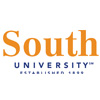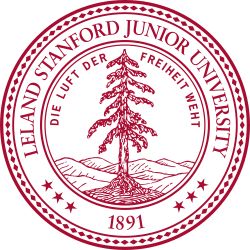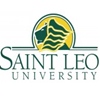Dakota Wesleyan University is a private university located in Mitchell, South Dakota, USA.
1. History and Background of the School
Founding History: The school was founded in 1885 and has a profound historical heritage. It was established by the Wesleyan Episcopal Church and has been carrying the mission of religious education since its inception. In the course of more than a century of development, it has continuously adapted to the changes of the times. While maintaining religious traditions, it has also made many advances in academics and campus culture.
Religious Tradition and Influence: As a university with a religious background, Christian values are deeply integrated into the school's educational philosophy. The school encourages students to explore knowledge and cultivate morality under the guidance of faith, and helps students establish a value system based on religious beliefs through activities such as worship ceremonies, religious courses and community services.
2. School Size and Environment
Campus Size and Facilities: The campus covers an area of about 60 acres. Although the area is not large, it has a reasonable layout and the architectural style combines traditional and modern elements. The campus has complete teaching facilities, including modern classrooms, laboratories, libraries, etc., which can meet the learning and research needs of students. There are also comfortable student dormitories, gymnasiums and various leisure and entertainment facilities to provide students with a good living environment.
Geographical location and surrounding environment: Located in Mitchell, a vibrant city with rich cultural and historical resources. Mitchell is famous for its world-famous Corn Palace, which provides students with the opportunity to get in touch with local culture. At the same time, the city is of moderate size, providing students with a safe and friendly community environment, and can also provide certain conveniences in internships and employment.
III. Academic Strength
Professional Settings and Curriculum System
Undergraduate Majors: Undergraduate majors in many fields are provided, such as business administration, education, nursing, art, biology, chemistry, criminal justice, English, history, mathematics, music, psychology, religion, etc. Among them, the nursing major cultivates students with solid medical knowledge and clinical nursing skills, and the courses include human anatomy, physiology, and basic nursing; the business administration major focuses on cultivating students' management, marketing, finance and other aspects of the ability, covering courses such as business management, marketing, and financial management.
Graduate majors: There are also some graduate majors to choose from, such as educational leadership and other majors, which provide opportunities for students who want to develop in-depth in the field of educational management. Courses include educational leadership theory, organizational behavior and other contents.
Teaching quality and teaching methods
The teaching quality is high, with a small class teaching model and a teacher-student ratio of about 1:13, which enables teachers to pay attention to the learning progress of each student and provide personalized guidance for students. Teachers focus on heuristic teaching in the teaching process and encourage students to think actively and participate in classroom discussions. At the same time, the school also emphasizes practical teaching. For example, nursing students have the opportunity to conduct clinical internships in affiliated hospitals, and business administration students can participate in corporate consulting projects.
Academic resources and scientific research opportunities
The school has rich academic resources, the library has a rich collection of books covering various disciplines, and provides electronic resource access services to facilitate students to conduct academic research. In addition, the school also actively encourages students to participate in scientific research projects. Teachers will guide students to carry out some small research projects. For example, in the fields of biology, chemistry and other disciplines, students can conduct experimental research under the guidance of teachers to improve their scientific research capabilities.
IV. Campus life
Student organizations and club activities: There are various student organizations and clubs covering academic, cultural, artistic, sports and other fields. Academic clubs such as the Biology Club and the Business Club regularly organize academic lectures, seminars and other activities to help students broaden their professional knowledge. Cultural clubs include international cultural exchange clubs, historical and cultural research clubs, etc., which allow students to feel the charm of different cultures by holding cultural festivals and cultural exchange activities. In terms of sports clubs, there are basketball, football, volleyball and other teams. Students can exercise and cultivate team spirit by participating in sports activities.
Campus activities and traditional festivals: Colorful campus activities are held regularly, such as welcome parties, graduation ceremonies, campus concerts, sports competitions, etc. The school also has some distinctive traditional festivals, such as religious festival celebrations. These activities not only enrich students' extracurricular life, but also enhance students' sense of belonging and cohesion on campus.
Accommodation life and catering services: Provide a variety of student dormitories, including traditional dormitories and apartment-style dormitories. Dormitory life is an important part of campus life. Dormitory management focuses on creating a good living environment and community atmosphere. The interaction and communication between roommates help students build deep friendships. The school's catering services are also rich, with multiple canteens and restaurants, providing food of various flavors to meet the dietary needs of different students.
V. Admission requirements and enrollment situation
Undergraduate admission requirements: Students are required to have a high school diploma, and usually need to submit high school transcripts, letters of recommendation and other materials. For international students, they are also required to provide proof of English language proficiency, such as TOEFL or IELTS scores. The specific score requirements depend on the major and the enrollment situation of the year. Some majors may also require students to take admission tests or interviews.
Graduate admission requirements: Students are required to have a bachelor's degree and their average grades must meet certain standards. Some majors may also require standardized test scores such as GRE and GMAT, as well as application materials such as letters of recommendation and personal statements. The school's admissions policy focuses on the comprehensive quality of students and the degree of professional matching. The admission rate will vary depending on factors such as different majors and the number of applicants.
VI. Tuition and Financial Aid
Tuition standards and cost structure: Tuition varies depending on factors such as majors and student status (in-state/out-of-state). Generally speaking, undergraduate tuition is around $30,000 to $40,000 per year, and graduate tuition varies depending on the specific major. In addition to tuition, other expenses such as accommodation, food, and books are also included.
Financial Aid and Scholarship Policy: The school provides a variety of financial aid methods, including scholarships, grants, loans, etc. Scholarships are mainly based on students' academic performance, talents, leadership and other factors, such as academic scholarships, art scholarships, sports scholarships, etc. The school will also help students apply for federal and state government grants to reduce their financial burden.
-

Harvard University
-

Massachusetts Institute of Technology
-

South University
-

University of West Georgia
-

Stanford University
-

Northwest Nazarene University
-

Hawaii Pacific University
-

Shorter University
-

Nova Southeastern University
-

Saint Leo University
-

Mesoamerican University
-

Istmo University
-

Mariano Galvez University of Guatemala
-

Regional University of Guatemala
-

Galileo University
-

Francisco Marroquín University
-

Rafael Landívar University
-

University of the Valley of Guatemala
-

University of San Carlos of Guatemala
-

Technological Institute of Tlaxcala Plateau
-

Golfo University
-

Technological University of South Sonora
-

Technological University of Huejotzingo
-

Tizimín Institute of Technology
-

Chilpancingo Institute of Technology

